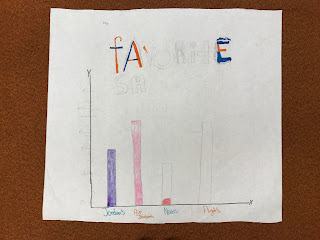This week I began my seven week placement in a Transition
classroom working with adults with disabilities. I spent my first days of the
week in training learning all about the history of the school, how to transport
students in wheelchairs, how to aide students that use communication devices,
and so much. It was so exciting to learn all about how this incredible school
services their diverse students.
On Wednesday, I got to meet my classroom. My class consists
of 17 students all with a variety of disabilities. Students in the transition
program have jobs that they spend half of the day at. Some students work in the
community and some work at the school. Half of the students in my classroom
work in the morning and the other half work in the afternoon. All seventeen
students are together for morning meetings, lunch, and dismissal. Many of my
students can read, write, and compute basic math. The majority of the class
falls between the third and fourth grade range of academic ability. All of my
students self-feed and dress. My students do not need assistance in the bathroom,
but they need to be monitored for safety. All seventeen of my students have
communication deficits but are verbal. At the beginning of every school day one
student is picked to pray over the upcoming day. Students pray again prior to
lunch and before dismissal. It has been beautiful hearing my student’s voices
as they pray.
My students are not necessarily aggressive, however, many of
them have defiant or aggressive behaviors. Many of the student’s behaviors are far
worse at home then at school. One student threatens to become aggressive often
throughout the day and tell his parents he wants to hurt his
teacher.
In this transition classroom, students are taught social
skills, problem solving, vocational skills, daily living skills, and other
essential life skills. Every Friday, students are taken out into the community
to practice a variety of social skills. Students participate in adaptive
Physical Education once a week. All of my students are ambulatory, however,
some of them have physical needs. Along with Physical Education, students also
swim in the school’s swimming pool every other week.
I have learned so much about teaching special education in
the three days I’ve been in the classroom. Because it is only my first week, I
only observed and read through the paperwork of my students. I’ve gotten to
know each of my students.
The school I am in now is a whole different world than that
of my fifth grade classroom. Even though I have not begun to teach my adults, I
can already see that I will have a lot of valuable experience working with
diverse students. Illinois Professional Teaching standard number 1 states, “The
competent teacher understands the diverse characteristics and abilities of each
student and how individuals develop and learn within the context of their
social, economic, cultural, linguistic, and academic experiences. The teacher
uses these experiences to create instructional opportunities that maximize
student learning.” My previous placement taught me all about teaching students
with diverse social, economic, and academic experiences. Knowledge indicator 1A
states that the competent teacher, “understands the spectrum of student
diversity (e.g., race and ethnicity, socioeconomic status, special education,
gifted, English language learners (ELL), sexual orientation, gender, gender
identity) and the assets that each student brings to learning across the
curriculum.” I’m excited to learn more about special education, how to teach
students with disabilities in a self-contained classroom, and what my students
have to offer the classroom.
Classroom
Confidential
In my previous placement students wrote in their journals
every day after lunch. The students had 15 minutes to write in their journals.
Once a week, they had free journal writing where they could write about
whatever they want. Every other day, they were given a simple prompt that they
could do whatever they want with. Grammar and spelling don’t count. As long as
the students are writing they receive full credit for their writing. In chapter
six, Schmidt writes about warm ups as an effective strategy for writing instruction.
When I was reading this I was reminded of my fifth grade class and their
journal time. I think warm ups are a great way for students to get their brains
churning whether they are preparing for more writing or other instructional
time. Warm ups, I think, is a great strategy that all teachers can use with
their students.






